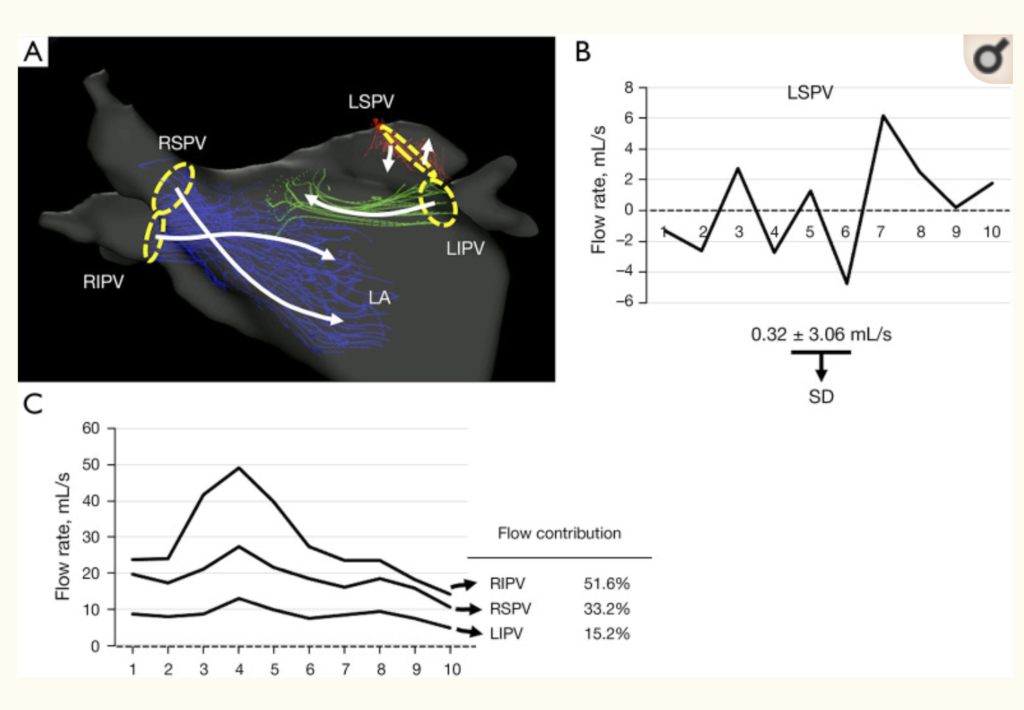Hemodynamic features underlying pulmonary vein stump thrombus formation after left upper lobectomy: four-dimensional flow magnetic resonance imaging study
Pulmonary vein stump thrombus after lung lobectomy is a critical adverse event that can cause vital organ embolism, although surgeons conventionally have paid little attention to this event.
The aim of the present study was to compare the hemodynamics in patients who developed pulmonary vein thrombus after left upper lobectomy with those in patients who did not develop pulmonary vein thrombus using four-dimensional flow magnetic resonance imaging (4D MRI).
The result that they proposed the existence of a ‘dangerous’ hemodynamic condition responsible for PV thrombus formation after LUL(left upper lobectomy) using 4D MRI.
4D MRI before the development of PV thrombus may help identify patients requiring preventive therapy against PV thrombus after LUL.
Reference
Tadashi Umehara, Koji Takumi,Kazuhiro Ueda,Takuya Tokunaga, Aya Harada-Takeda, and Masami Sato, "Hemodynamic features underlying pulmonary vein stump thrombus formation after left upper lobectomy: four-dimensional flow magnetic resonance imaging study", Quantitative Imaging in Medicine and Surgery , Published Online (2022) 10.21037/qims-21-472.
Go To the Journal Page
